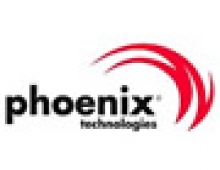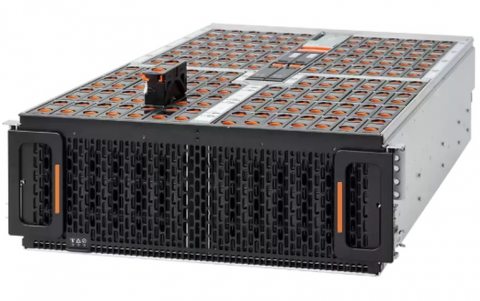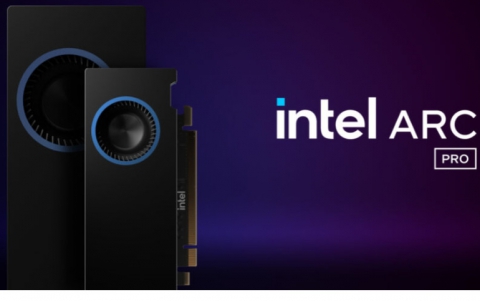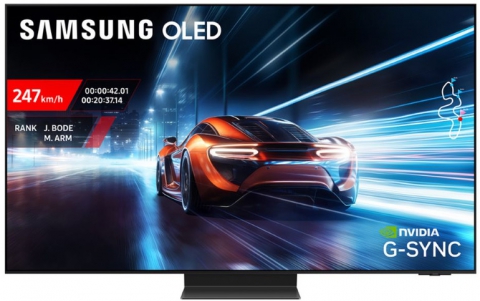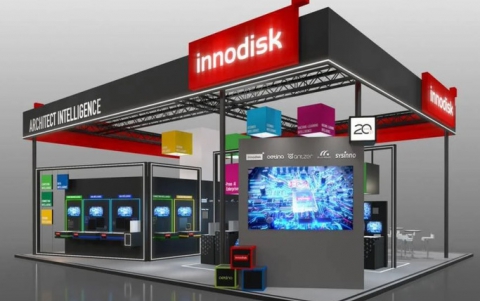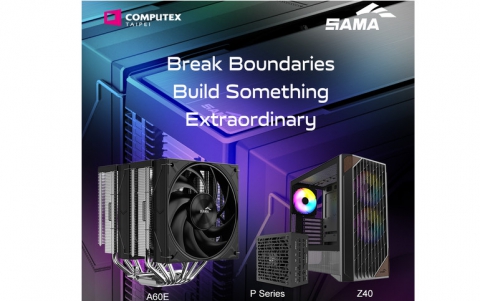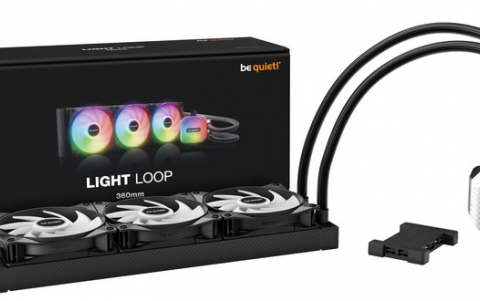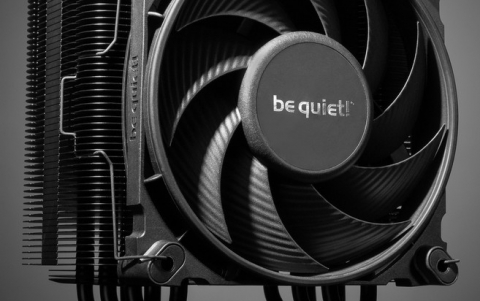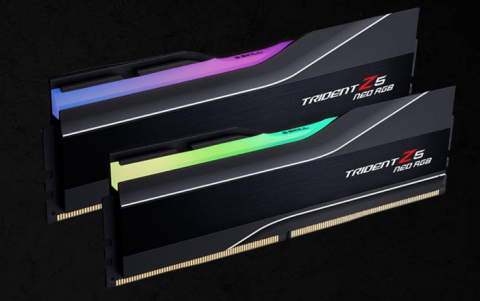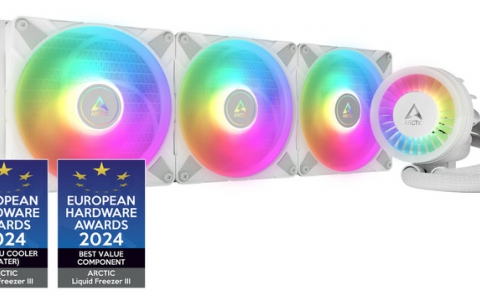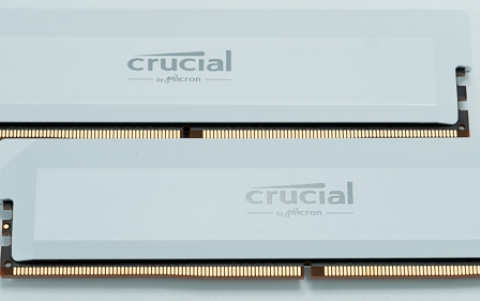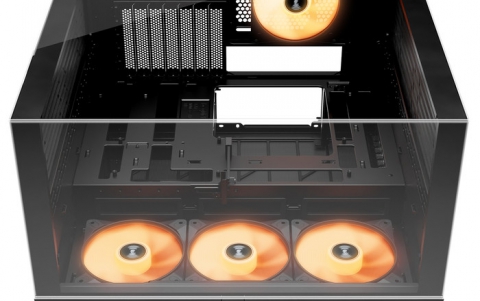
UEFI To Start Replacing PC BIOS by 2011
Bios'replacement, known as Unified Extensible Firmware Interface (UEFI), will predominate in new PCs by 2011, according to Mark Doran, head of the UEFI Forum.
Based on Intel's EFI 1.10 specification and currently developed and managed by the Unified EFI Forum, UEFI is a a specification detailing an interface that helps hand off control of the system for the pre-boot environment (i.e.: after the system is powered on, but before the operating system starts) to an operating system, such as Windows or Linux.
UEFI's goal is to provide a clean interface between operating systems and platform firmware at boot time, and will support an architecture-independent mechanism for initializing add-in cards.
The BIOS (basic input/output system) is the program originally conceived to get a PC started after power-on. The BIOS also manages pre-boot data flow between the computer's operating system and attached devices such as the hard disk, video adapter, keyboard, and mouse. When the BIOS starts up your computer, it first determines whether all of the attachments are in place and operational and then it loads the operating system (or key parts of it) into the computer's memory from local storage (floppy, hard disk, CD-ROM, USB) or network.
How does UEFI differ from BIOS?
The Basic Input/Output System (BIOS) served as the OS-firmware interface for the original PC-XT and PC-AT computers. This interface has been expanded over the years as the "PC clone" market has grown, but was never fully modernized as the market grew. UEFI defines a similar OS-firmware interface, known as "boot services" and "runtime services", but is not specific to any processor architecture. BIOS is specific to the Intel x86 processor architecture, as it relies on the 16-bit "real mode" interface supported by x86 processors.
UEFI is expected to predominate in new PCs by 2011, Mark Doran, head of the UEFI Forum was quoted to say by BBC News.
UEFI is free from architectures limitation, as the technology scales across paltforms (server, desktop, mobile, handheld).
For the users' perspective, the advantages of UEFI machines include fast boots (less than 5 seconds) as well and resume response, they could feature a high-resolution Graphics User Interface in pre-boot environment and the systems will be able to boot from large (2.2TB or higher) disks. In addition, UEFI machines may feature Pre-OS security and rich networking ( IPV6/IPSec; Authenticode signature for firmware modules, Secure updates, TPM & CRTM), boot service and protocols through UEFI driver. Users may also be able to access Outlook data in seconds even when their notebook is off.
UEFI generally frees any computer from being based around the blueprint and specifications of the original PCs. It does not specify that a keyboard will only connect via a PC's AT or PS/2 port. As a result, problems such as booting from a USB flash drive to get a system working while installing or re-installing an operating system will be resolved.
Under UEFI, it will be also much easier for that input to come a soft keyboard, gestures on a touchscreen or any future input device. The first to see the benefits of swapping old-fashioned Bios for UEFI have been system administrators who have to oversee potentially thousands of PCs in data centres or in offices around the world. UEFI has much better support for basic net protocols which should mean that remote management is easier.
Some PC and laptop makers are already using UEFI as are many firms that make embedded computers. More, said Mr Richardson, will result as motherboard makers complete the shift to using it.
However, UEFI will not completely replace a PC BIOS. While UEFI uses a different interface for "boot services" and "runtime services", some platform firmware must perform the functions BIOS uses for system configuration (a.k.a. "Power On Self Test" or "POST") and Setup. UEFI does not specify how POST & Setup are implemented.
The BIOS (basic input/output system) is the program originally conceived to get a PC started after power-on. The BIOS also manages pre-boot data flow between the computer's operating system and attached devices such as the hard disk, video adapter, keyboard, and mouse. When the BIOS starts up your computer, it first determines whether all of the attachments are in place and operational and then it loads the operating system (or key parts of it) into the computer's memory from local storage (floppy, hard disk, CD-ROM, USB) or network.
How does UEFI differ from BIOS?
The Basic Input/Output System (BIOS) served as the OS-firmware interface for the original PC-XT and PC-AT computers. This interface has been expanded over the years as the "PC clone" market has grown, but was never fully modernized as the market grew. UEFI defines a similar OS-firmware interface, known as "boot services" and "runtime services", but is not specific to any processor architecture. BIOS is specific to the Intel x86 processor architecture, as it relies on the 16-bit "real mode" interface supported by x86 processors.
UEFI is expected to predominate in new PCs by 2011, Mark Doran, head of the UEFI Forum was quoted to say by BBC News.
UEFI is free from architectures limitation, as the technology scales across paltforms (server, desktop, mobile, handheld).
For the users' perspective, the advantages of UEFI machines include fast boots (less than 5 seconds) as well and resume response, they could feature a high-resolution Graphics User Interface in pre-boot environment and the systems will be able to boot from large (2.2TB or higher) disks. In addition, UEFI machines may feature Pre-OS security and rich networking ( IPV6/IPSec; Authenticode signature for firmware modules, Secure updates, TPM & CRTM), boot service and protocols through UEFI driver. Users may also be able to access Outlook data in seconds even when their notebook is off.
UEFI generally frees any computer from being based around the blueprint and specifications of the original PCs. It does not specify that a keyboard will only connect via a PC's AT or PS/2 port. As a result, problems such as booting from a USB flash drive to get a system working while installing or re-installing an operating system will be resolved.
Under UEFI, it will be also much easier for that input to come a soft keyboard, gestures on a touchscreen or any future input device. The first to see the benefits of swapping old-fashioned Bios for UEFI have been system administrators who have to oversee potentially thousands of PCs in data centres or in offices around the world. UEFI has much better support for basic net protocols which should mean that remote management is easier.
Some PC and laptop makers are already using UEFI as are many firms that make embedded computers. More, said Mr Richardson, will result as motherboard makers complete the shift to using it.
However, UEFI will not completely replace a PC BIOS. While UEFI uses a different interface for "boot services" and "runtime services", some platform firmware must perform the functions BIOS uses for system configuration (a.k.a. "Power On Self Test" or "POST") and Setup. UEFI does not specify how POST & Setup are implemented.



